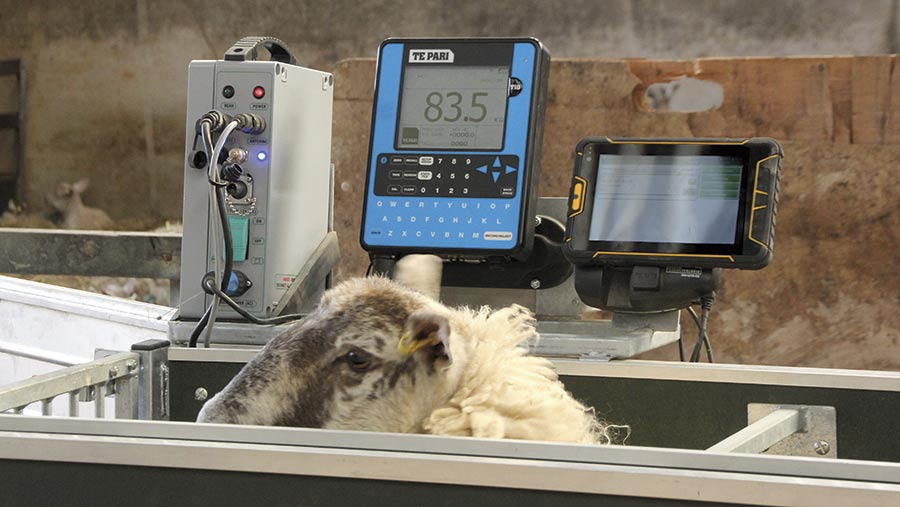Beef and sheep weigh head buyers guide

An array of weight recording systems on the market can make choosing the appropriate set-up difficult for livestock farmers.
Most manufacturers will have a variety of models in their range, of varying capabilities – most of which will be sold as part of a whole weigh management system with weigh cells and crush.
See also: How to avoid infecting your herd when buying cattle
The recording aspect of the system starts with weigh heads that just record the weight at that time, right up to models that allow complex data analysis at the crush and through farm management software.
Farmers Weekly asked key manufacturers to go into detail on their top-selling weight head system to provide a snapshot of what’s available.
Download the weigh head buyers guide [PDF].
Weigh head buying tips
Neil Rowe, independent livestock consultant, AHDB Beef & Lamb’s Liz Genever and Mary Vickers offer their tips on what to think about when choosing these systems:
- Before making any purchase, ask yourself what you want to get out of the system – how do you want to analyse data? What management decisions do you want to make?
- Carefully consider if it’s the right move for you if you’re just looking to replace pen and paper weight recording. The “bolt ons” add the value to what you are doing (for example, auto draft, auto-drenching gun)
- Don’t get hung up on what it looks like – the weigh head itself is secondary to the software that’s on it and how the data can be analysed
- If you’ve got existing farm management software, can information from the weigh head be transferred and analysed on that?
- Data synching and transfer from the weigh head is key – is it automatic or do you manually have to hard wire it to the computer? Automatic transfer from the crush to farm management software will avoid issues with forgetting to transfer data or manual entry of weights.
- Think about where and how data can be viewed. More sophisticated systems enable data entry at the crush side and provide management information that can be used to make real-time decisions, rather than having to access more detailed records back in the office.
- Even if you’re not using EID now for recording, make sure the system has the capability to add it in the future
- Go to an event, look at the different systems. Also ask the manufacturers if they can demo it on your farm.
- Speak to farmers that have the kit, see it in action and ask them what it does or doesn’t do. Also, consider hiring it first.
- Ask each manufacturer about after sales support and training.
- Ask manufacturers about future proofing, will future systems be “backwards compatible”?
